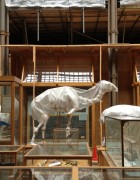I ran a seminar session this week based on Ken Friedman’s well known Design Studies article of 2003 – Theory construction in design research: criteria: approaches, and methods. In this article Friedman points out that theory in design has been limited to domain specific iterations. Architectural theory, graphic design theory, film theory etc. exercise intellectual endeavour to carve out a theoretical academic space of their own. In a world where, as Friedman puts it, ‘the increasing number of areas that are now subject to human initiative’ means that limiting design research and its associated theoretical activity to siloed domains is no longer sufficient or practical. There is a need for theory able to account for design as a global integrative activity taking in services, sustainability, communication, urban environments and all the other many forms of design activity.
This reading of theory in design depends on Herbert Simon’s famous definition of design as ‘the process by which we [devise] courses of action aimed at changing existing situations into preferred ones.’ This is the so-called design science perspective, one that places certain limits on design activity. Design is seen as solving problems, integrating disciplines towards a goal-directed end, improving situations, and creating new useful things. It strikes me that this not all that design does. There is an expressive, critical, innovative, or inventive aspect to design not covered by this definition. I’ve been thinking about this in terms of Massimo Vignelli’s New York Subway map on one hand and Milton Glaser’s I♥NY on the other. The first is highly functional, intended to facilitate urban navigation on a mass scale. The second is intended to elicit emotional response, cause delight, tickle the pleasure centre. If design can be both things at once, how then is the design science position justifiable without tying oneself in rhetorical knots defining emotional functions or the like? The weakness of design science as a basis and justification for theory in design is that it admits only the definition of design as solving problems. Is there any need for theory then if design is defined in a different way?
An alternative theory of design is found in Concept-Knowledge (C-K) theory which seems to take account of two key limitations of the design science approach. Firstly, it allows for more a formalised definition of design activity independent of specific domains. It is true that Simon’s definition does this as well, but design science remains definitively goal-directed. Secondly C-K theory includes invention and creativity along with the more identifiable aspects of design process and may be more adaptable to the expressive and and critical environment for design I find myself working in. C-K theory is relatively new to me but I believe merits closer attention.
A more powerful rationale for theory in design is presented by Friedman however. ‘Developing a comprehensive background through practice takes many years. In contrast, a solid foundation of design knowledge anchored in broad research traditions gives each practitioner the access to the cumulative results of many other minds and the overall experience of a far larger field’. Theory operates on a higher level than the specific and can be deployed in different situations. Theory is scaleable at industrial measures and reproducible across cultures.
Another facet of how theory in design has evolved is its troubled relationship with practice. Friedman suggests ‘The misguided effort to link the reflective practice of design to design knowledge, and the misguided effort to propose tacit knowledge or direct making as a method of theory construction must inevitably be dead ends.’ In design education and particularly as a practice-based research student we are given much conflicting advice about practice. The idea that practice can never directly lead to theory construction but must always be diverted through research seems correct to me. There is then some implication for how research is defined and assessed. Practice-based research is a problematic area at doctoral level and there are few institutions capable of conceiving of a robust model. Luckily the RCA has been at the forefront of the practice-based tradition in design research for some 20 years.
A further side effect of the diversity of design domains has been the borrowing of theory from other fields. This is evident in the influence of psychology on interaction design, or cultural studies on communication design. Some voices, in HCI particularly, see this as a weakness – they want a theory of their own and the field is seen as theoretically weak, dominated as it is by intellectuals from rich theoretical traditions such as physics and sociology. Contrasting voices see theoretical diversity as a real strength, offering a wide philosophical base on which to construct a plurality of design approaches.
In summary, the need for theory in design is clear. I believe Friedman was right to say that the need becomes more urgent the more design is distributed around the world. In the past decade many of the world’s problems from global hunger to deforestation have been recast as design problems, unified only by their complexity and interrelatedness. As designers go about their business their work is only going to be useful on a wider scale, and communicable across cultures and generations if it includes a coherent theoretical basis.

